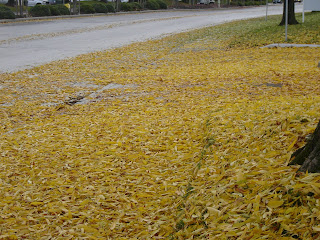Aerodynamics
Aerodynamics you ask? Yep that's exactly what I mean. How does it relate to cycling? Here's how:
Nowadays racing bicycles are built for speed. Before it used to be just about the rider, now its still about the biker but with the added advantage of an aerodynamically designed bike.
The bike is put through a wind tunnel (Yes I said a wind tunnel, like the ones used with cars and air crafts) and the rider is positioned on the bike to test what can be improved in the design of the bike as well as with the position of the rider all in order to make him go faster (were talking seconds here). For example, the crouching position vs. the upright position. For Lance Armstrong's ride in the Tour De France they took every component on bicycle into consideration and every position of Lance, taking into consideration such minute details as to how much time an extended finger would cost him during his time trial stages. His clothing was specially made to improve air flow and the entire shape of the bicycle frame was aerodynamically designed.
But without getting too carried away lets apply this to commuting. Bicycle commuters can face every weather condition imaginable with wind being one of the most important of them. Headwinds cause us to fight to pedal at our normal speed (Which, in most cases, is practically impossible), side winds can blow us off course if we're not prepared, and tail winds can give us an extra burst of speed which helps us go faster with less effort. Tailwinds are a pretty exhilarating experience while headwinds and side winds are pretty demoralizing.
Aerodynamic positions help commuters most in situations where there are heavy headwinds. It helps greatly to know how to crouch properly while maintaining a decent speed. The positioning is like an aeroplane cutting through the air compared to a sail catching the air. Standing on the pedals and stomping doesn't help much either and in fact causes us commuters to waste energy (though it could help in some circumstances).
Why would someone go through all this pain on a bicycle you ask? Well for one thing it's better than driving and you don't get that feeling of being cut off from the rest of the world. So to put this in a nutshell, we go with the wind which ever direction it tries to take us. Head winds give us more stamina while tail and side winds help us learn bike control. Either way its all good because we get fitter and fitter with every ride.
To put it in a nutshell, for the commuter its not about the bike, but the engine...
Nowadays racing bicycles are built for speed. Before it used to be just about the rider, now its still about the biker but with the added advantage of an aerodynamically designed bike.
The bike is put through a wind tunnel (Yes I said a wind tunnel, like the ones used with cars and air crafts) and the rider is positioned on the bike to test what can be improved in the design of the bike as well as with the position of the rider all in order to make him go faster (were talking seconds here). For example, the crouching position vs. the upright position. For Lance Armstrong's ride in the Tour De France they took every component on bicycle into consideration and every position of Lance, taking into consideration such minute details as to how much time an extended finger would cost him during his time trial stages. His clothing was specially made to improve air flow and the entire shape of the bicycle frame was aerodynamically designed.
But without getting too carried away lets apply this to commuting. Bicycle commuters can face every weather condition imaginable with wind being one of the most important of them. Headwinds cause us to fight to pedal at our normal speed (Which, in most cases, is practically impossible), side winds can blow us off course if we're not prepared, and tail winds can give us an extra burst of speed which helps us go faster with less effort. Tailwinds are a pretty exhilarating experience while headwinds and side winds are pretty demoralizing.
Aerodynamic positions help commuters most in situations where there are heavy headwinds. It helps greatly to know how to crouch properly while maintaining a decent speed. The positioning is like an aeroplane cutting through the air compared to a sail catching the air. Standing on the pedals and stomping doesn't help much either and in fact causes us commuters to waste energy (though it could help in some circumstances).
Why would someone go through all this pain on a bicycle you ask? Well for one thing it's better than driving and you don't get that feeling of being cut off from the rest of the world. So to put this in a nutshell, we go with the wind which ever direction it tries to take us. Head winds give us more stamina while tail and side winds help us learn bike control. Either way its all good because we get fitter and fitter with every ride.
To put it in a nutshell, for the commuter its not about the bike, but the engine...









